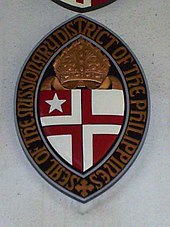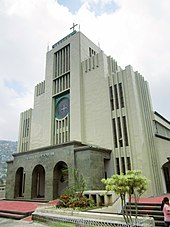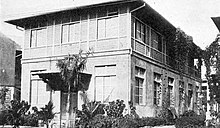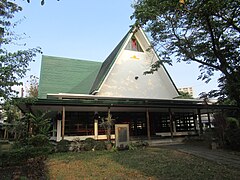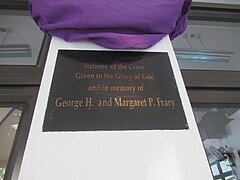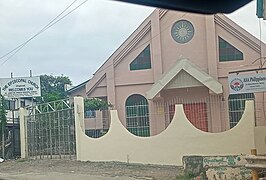
The Nippon Sei Ko Kai, abbreviated as NSKK, sometimes referred to in English as the Anglican Episcopal Church in Japan, is the national Christian church representing the Province of Japan within the Anglican Communion.

The Philippine Independent Church is an independent Christian denomination, in the form of a nationalist church, in the Philippines. Its schism from the Roman Catholic Church was proclaimed during the American colonial period in 1902, following the end of the Philippine–American War, by members of the Unión Obrera Democrática Filipina due to the pronounced mistreatment towards the Filipinos by Spanish priests, and partly influenced by the unjust executions of José Rizal and Filipino priests and prominent secularization movement figures Mariano Gomez, José Burgos, and Jacinto Zamora, during earlier Spanish colonial rule wherein Roman Catholicism was the state religion in the country at the time.
The Continuing Anglican movement, also known as the Anglican Continuum, encompasses a number of Christian churches, principally based in North America, that have an Anglican identity and tradition but are not part of the Anglican Communion.

Sagada, officially the Municipality of Sagada is a 5th class municipality in the province of Mountain Province, Philippines. According to the 2020 census, it has a population of 11,510 people.

As part of the worldwide Catholic Church, the Catholic Church in the Philippines, or the Philippine Catholic Church, is under the spiritual direction of the Pope in Rome. The Philippines is one of the two nations in Asia having a substantial portion of the population professing the Catholic faith, along with East Timor, and has the third largest Catholic population in the world after Brazil and Mexico. The episcopal conference responsible in governing the faith is the Catholic Bishops' Conference of the Philippines (CBCP).

The Anglican Catholic Church (ACC), also known as the Anglican Catholic Church (Original Province), is a body of Christians in the continuing Anglican movement, which is separate from the Anglican Communion. This denomination is separate from the Anglican Catholic Church in Australia and the Anglican Catholic Church of Canada.

Trinity University of Asia, also known as TUA or simply Trinity, is a non-sectarian private university located in Quezon City, Philippines. It was named after Trinity College (Connecticut) whose president then was the founder's father. Formally established in 1963 as an elementary, high school and collegiate educational institution by the Protestant Episcopalians, it dates back its earliest establishment in 1907 when the Trinity University of Asia - St. Luke's College of Nursing, its oldest organic academic unit, was established under the St. Luke's Hospital, the present day St. Luke's Medical Center. It later acquired its university status on July 18, 2006.
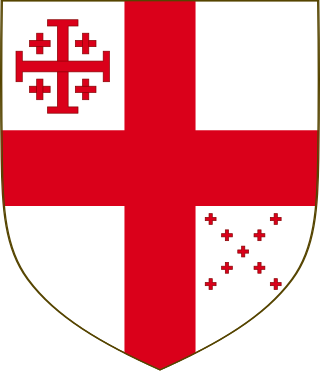
The United Episcopal Church of North America (UECNA) is a church in the Anglican tradition and is part of the Continuing Anglican movement. It is not part of the Anglican Communion.

Charles Henry Brent was the Episcopal Church's first Missionary Bishop of the Philippine Islands (1902–1918); Chaplain General of the American Expeditionary Forces in World War I (1917–1918); and Bishop of the Episcopal Church's Diocese of Western New York (1918–1929). The historian and Episcopal minister Frederick Ward Kates characterised him as a "gallant, daring, and consecrated soldier and servant of Christ" who was "one of modern Christendom's foremost leaders, prophets, and seers."
The Diocese of Shanghai was an American Anglican bishopric that was involved in missionary work in China during the late Qing dynasty.

The Episcopal Diocese of Utah is a diocese of the Episcopal Church in the United States, encompassing the state of Utah, less that part of the Four Corners region which is in the Navajoland Area Mission. It includes a small part of northern Arizona. In 1867, the Episcopal Church was the first Protestant church organized in Utah. The diocesan offices and cathedral, St. Mark's Cathedral, are in Salt Lake City. The current bishop is The Rt. Rev. Phyllis A. Spiegel, whose consecration took place on September 17, 2022.

The Episcopal Diocese of the Virgin Islands is a diocese of the Episcopal Church in the United States of America (ECUSA/T.E.C) which includes both the United States Virgin Islands and the British Virgin Islands. The diocese is a part of Province II of the Episcopal Church. The previous Diocesan Bishop of the Virgin Islands was Edward Ambrose Gumbs, the seat is currently vacant but Rafael Morales from the Episcopal Diocese of Puerto Rico serves as Bishop Advisor. The cathedral church of the diocese is the Cathedral Church of All Saints, Charlotte Amalie. The diocese currently comprises 14 churches. There is a functioning parish school on St. Thomas All Saints Cathedral School there was an academic campus on St. Croix, St. Dunstan's Episcopal High School. St. Dunstan's closed in the 1990s. There is also the St. Georges School located on the parish property of St. Georges Episcopal Church in Road Town, Tortola in the British Virgin Islands, which also opened the St. Georges School in Palestina Estate near to the St. Paul's Episcopal Church in Sea Cow's Bay, Tortola in the British Virgin Islands. There is also the St. Mary's School located on the parish property of the St. Mary's Episcopal Church in Valley, Virgin Gorda in the British Virgin Islands.

The United Church of Christ in the Philippines is a Christian denomination in the Philippines. Established in its present form in Malate, Manila, it resulted from the merger of the Evangelical Church of the Philippines, the Philippine Methodist Church, the Disciples of Christ, the United Evangelical Church and several independent congregations.

The Church of St. Mary the Virgin is the main Episcopal church in Sagada, Mountain Province, Philippines.

Lyman Cunningham Ogilby was an Episcopal priest who became a missionary bishop in the Philippines, coadjutor bishop in the Episcopal Diocese of South Dakota and later the Episcopal Diocese of Pennsylvania, where he succeeded Bishop Robert L. DeWitt and became the 13th diocesan bishop until his retirement.

St. Luke's Medical Center – Quezon City is a hospital in Quezon City, Metro Manila, Philippines. It is a part of St. Luke's Medical Center group of hospitals

The Cathedral of St. Mary and St. John is an Anglican church in Quezon City, Metro Manila, Philippines. It serves as the National Cathedral of the Episcopal Church in the Philippines.

Anne Hayward Hargreaves was an English-born educator who was an Anglican missionary deaconess in the Philippines. She promoted and ran schools in the Cordillera region.

Hilary Clapp was a doctor and politician from Bontoc, Mountain Province, Philippines. He was an early convert of the Protestant American missions. He was one of the first Filipinos to arrive in Ontario, Canada. When he returned to the Philippines, he rose to prominence due to his education and connection to colonial officials. He became a doctor, the Igorot representative to the Philippine Commonwealth in the 1930s, and then the first Igorot governor of Mountain Province during the Japanese occupation.

